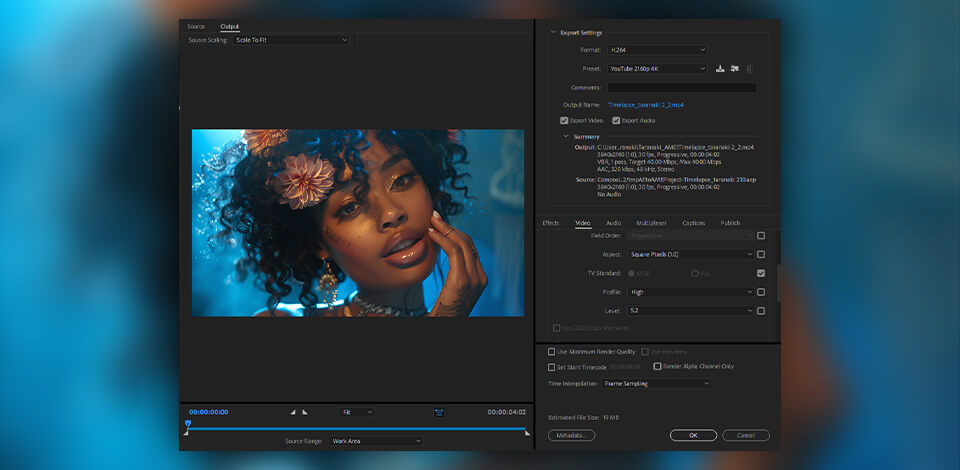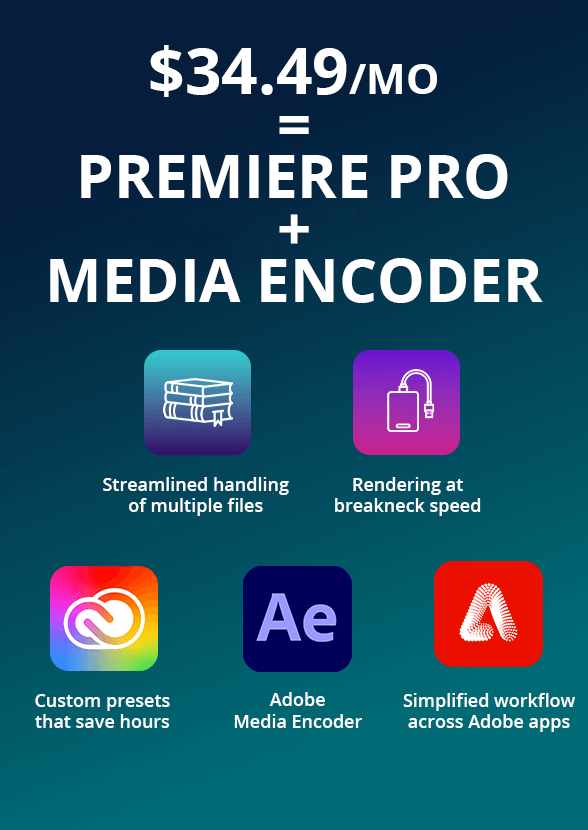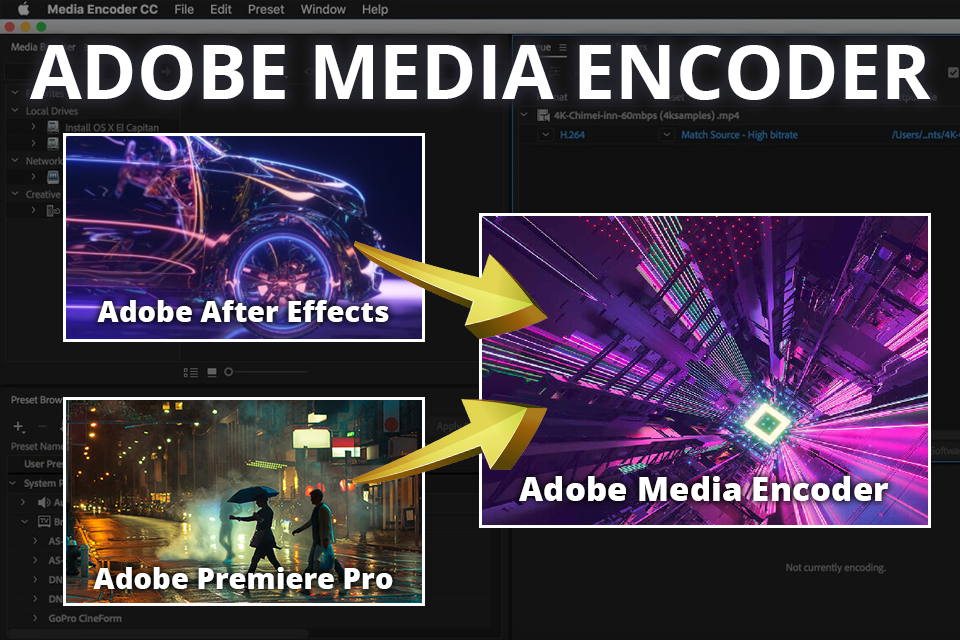
I recently used the program with my colleague, Kate, while working on some urgent projects. This video encoding software came in handy when I needed to convert high-resolution videos into web-friendly formats and streamline workflows for social media content creation.
The batch processing feature allowed us to handle multiple files simultaneously, significantly saving time. Despite such efficiency, the video quality remained outstanding, which was a huge plus.

I used older versions of the program like Adobe Media Encoder 2023 and 2014 before this update. They worked decently, but there were issues. Slow processing and limited format options made things more complicated. Handling large 4K files or newer codecs was especially challenging. These problems sometimes disrupted my workflow, particularly when I had to meet tight deadlines.
I’m looking forward to seeing how the latest version improves efficiency and makes the creative process more seamless.
|
File name:
|
Media_Encoder_mac_2025.dmg (download)
|
|
File size:
|
6.4MB
|
|
File name:
|
Media_Encoder_win_2025.exe (download)
|
|
File size:
|
5.8MB
|
|
File name:
|
Media_Encoder_mac_2022.dmg (download)
|
|
File size:
|
7.1MB
|
|
File name:
|
Media_Encoder_win_2022.exe (download)
|
|
File size:
|
6.9MB
|
|
File name:
|
Media_Encoder_mac_2019.dmg (download)
|
|
File size:
|
7.7MB
|
|
File name:
|
Media_Encoder_win_2019.exe (download)
|
|
File size:
|
7.3MB
|
✔️ Simplified workflow across Adobe apps. While working with Kate, I noticed how seamlessly the tool integrates with Premiere Pro and After Effects. Media Encoder streamlined the process by allowing us to queue and adjust multiple exports directly from our editing projects. This saved us from adding extra steps to the process. It was like having a production assistant who handled all the technical details for us, ensuring everything ran smoothly.

✔️ Custom presets that save hours. Another great discovery that impressed us was the ability to set up export options to fit specific requirements. For example, while preparing files for different platforms, setting up unique presets let me switch between requirements in an instant. It saved a lot of encoding time.
✔️ Streamlined handling of multiple files. Kate and I often need to process multiple videos at once, and handling so many files could cause much trouble. But thanks to Adobe Media Encoder’s queue system, organizing everything was a no-brainer. I queued up all the tasks and let them run overnight, saving us more time for editing.
✔️ Rendering at breakneck speed. When I need to meet tight deadlines, I’m always in a hurry. The software's GPU acceleration made things much faster. Rendering 4K files, which typically takes hours with other tools, was a breeze. In fact, the job was ready in a flash, and I barely had time to finish my coffee. Thanks to such high speed, I had plenty of time to think about my next steps without any stress.
❌ Steep learning curve for newcomers. Although Kate and I became familiar with the tool quickly, we both admitted that after downloading Adobe Media Encoder, the tool could initially feel a bit overwhelming. With so many settings and options, it’s powerful but requires some time to be mastered. For those new to Adobe’s tools, navigating it efficiently might take some extra effort and patience.

❌ High resource demands on older systems. At one of the intense sessions, I noticed that Media Encoder is not working or lagging when running the software on Kate’s older laptop. My newer setup handled the tasks easily, but her system had trouble with GPU-heavy renders, which slowed down our workflow.
❌ Occasional glitches with Dynamic Link. This feature is incredibly useful, but it does have its flaws. A few times, I ran into syncing problems where updates in Premiere Pro didn’t show up right away in the program. Thankfully, restarting both apps fixed it, but it was a minor issue that still took our precious time.
After testing Adobe Media Encoder for many hours, I managed to define the aspects that required some improvement in the next versions.
Although it is ideal for professional video encoding tasks, there are several Media Encoder alternatives, which can satisfy different needs and requirements.
The first tool I tested was HandBrake. Choose this option for fulfilling straightforward tasks such as video compression or conversion to popular formats. However, HandBrake struggles with more intricate workflows. Unlike Adobe Media Encoder, it lacks integration with other software, making it cumbersome to manage multiple projects efficiently.
FFmpeg turned my attention with its flexibility and excellent functionality. However, its interface is quite complicated to navigate, which was a major drawback for me. Adobe Media Encoder allows me to organize and oversee my encoding tasks visually, saving time and eliminating the need to remember complex commands.
Another option I explored was Shotcut. While it provides a range of basic features at no cost, its performance was lackluster when handling high-resolution files. In contrast, Adobe Media Encoder's GPU acceleration worked much better, especially for processing 4K content, which is an important part of my workflow.
I also tried Clipchamp, as I was curious to examine the tool that runs right in a browser. It’s handy for smaller tasks, but I found its reliance on an internet connection a bit restrictive. On the other hand, Adobe Media Encoder lets me work offline, so I don’t have to worry about slowdowns from internet problems.
Lastly, I tested OBS Studio, which is a tool I often use for screen recording. Although its encoding features are sufficient for simple tasks, it isn’t built to serve as a dedicated tool for professional exporting. Adobe Media Encoder, however, provides extensive format compatibility and highly customizable presets, which I often use in my projects.